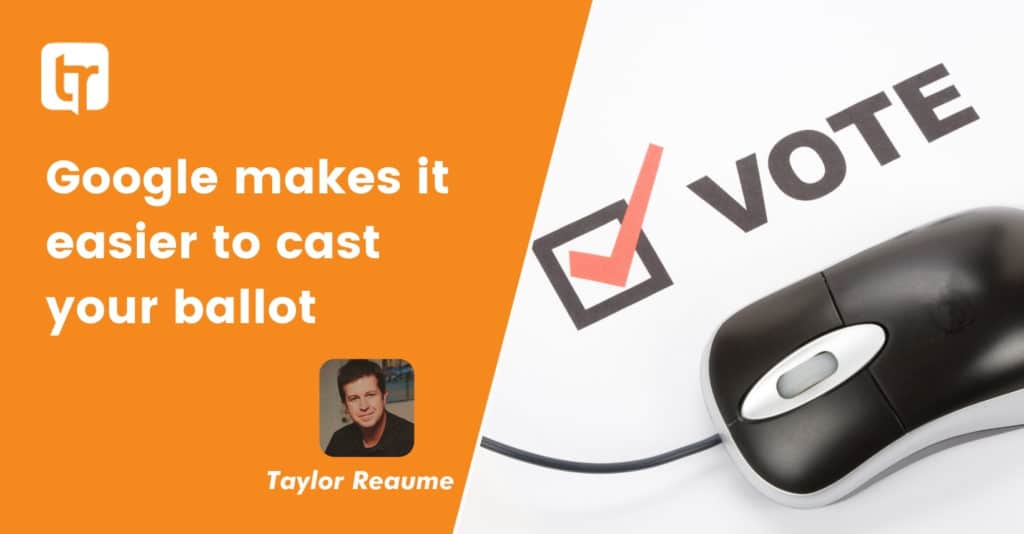An Update On Our Political Ads Policy
We’re proud that people around the world use Google to find relevant information about elections and that candidates use Google and search ads to raise small-dollar donations that help fund their campaigns. We’re also committed to a wide range of efforts to help protect campaigns, surface authoritative election news, and protect elections from foreign interference.
But given recent concerns and debates about political advertising, and the importance of shared trust in the democratic process, we want to improve voters’ confidence in the political ads they may see on our ad platforms. So we’re making a few changes to how we handle political ads on our platforms globally. Regardless of the cost or impact to spending on our platforms, we believe these changes will help promote confidence in digital political advertising and trust in electoral processes worldwide.
Our ads platforms today
Google’s ad platforms are distinctive in a number of important ways:
- The main formats we offer political advertisers are search ads (which appear on Google in response to a search for a particular topic or candidate), YouTube ads (which appear on YouTube videos and generate revenue for those creators), and display ads (which appear on websites and generate revenue for our publishing partners).
- We provide a publicly accessible, searchable, and downloadable transparency report of election ad content and spending on our platforms, going beyond what’s offered by most other advertising media.
- We’ve never allowed granular microtargeting of political ads on our platforms. In many countries, the targeting of political advertising is regulated and we comply with those laws. In the U.S., we have offered basic political targeting capabilities to verified advertisers, such as serving ads based on public voter records and general political affiliations (left-leaning, right-leaning, and independent).
Taking a new approach to targeting election ads
While we’ve never offered granular microtargeting of election ads, we believe there’s more we can do to further promote increased visibility of election ads. That’s why we’re limiting election ads audience targeting to the following general categories: age, gender, and general location (postal code level). Political advertisers can, of course, continue to do contextual targeting, such as serving ads to people reading or watching a story about, say, the economy. This will align our approach to election ads with long-established practices in media such as TV, radio, and print, and result in election ads being more widely seen and available for public discussion. (Of course, some media, like direct mail, continues to be targeted more granularly.) It will take some time to implement these changes, and we will begin enforcing the new approach in the U.K. within a week (ahead of the General Election), in the EU by the end of the year, and in the rest of the world starting on January 6, 2020.
Clarifying our ads policies
Whether you’re running for office or selling office furniture, we apply the same ads policies to everyone; there are no carve-outs. It’s against our policies for any advertiser to make a false claim—whether it’s a claim about the price of a chair or a claim that you can vote by text message, that election day is postponed, or that a candidate has died. To make this more explicit, we’re clarifying our ads policies and adding examples to show how our policies prohibit things like “deep fakes” (doctored and manipulated media), misleading claims about the census process, and ads or destinations making demonstrably false claims that could significantly undermine participation or trust in an electoral or democratic process. Of course, we recognize that robust political dialogue is an important part of democracy, and no one can sensibly adjudicate every political claim, counterclaim, and insinuation. So we expect that the number of political ads on which we take action will be very limited—but we will continue to do so for clear violations.
Providing increased transparency
We want the ads we serve to be transparent and widely available so that many voices can debate issues openly. We already offer election advertising transparency in India, in the EU, and for federal U.S. election ads. We provide both in-ad disclosures and a transparency report that shows the actual content of the ads themselves, who paid for them, how much they spent, how many people saw them, and how they were targeted. Starting on December 3, 2019, we’re expanding the coverage of our election advertising transparency to include U.S. state-level candidates and officeholders, ballot measures, and ads that mention federal or state political parties, so that all of those ads will now be searchable and viewable as well.
We’re also looking at ways to bring additional transparency to the ads we serve and we’ll have additional details to share in the coming months. We look forward to continuing our work in this important area.
Source: Official Google Webmasters Blog


